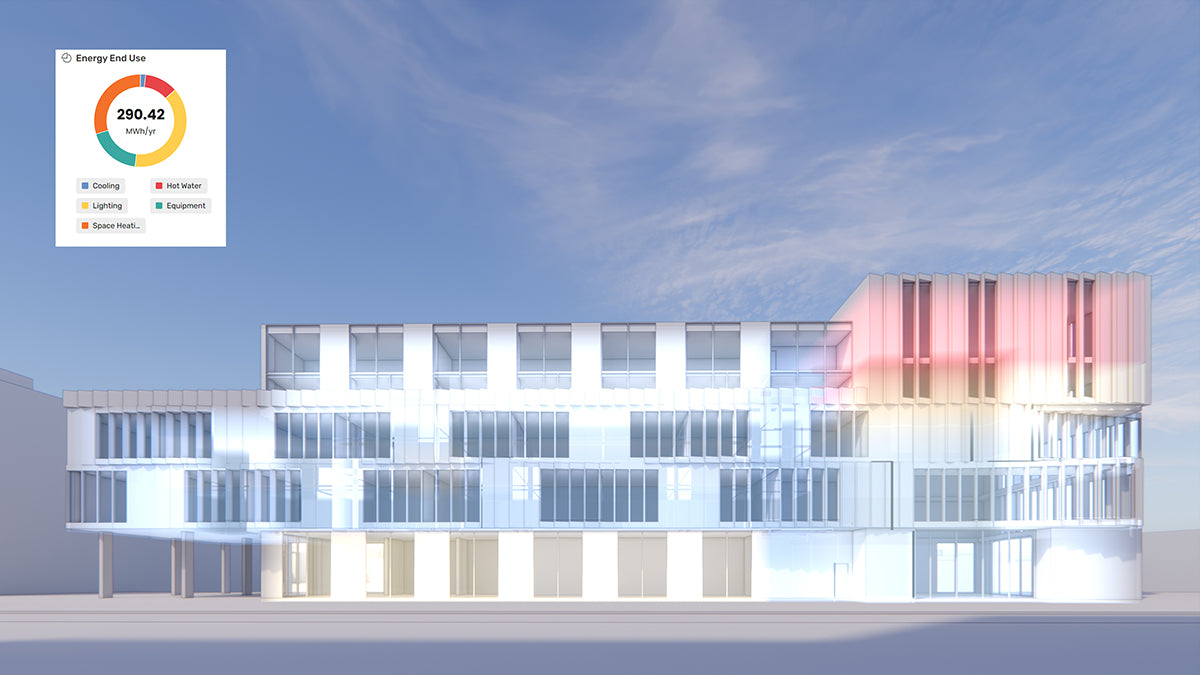Your Cart is Empty
Customer Testimonials
-
"Great customer service. The folks at Novedge were super helpful in navigating a somewhat complicated order including software upgrades and serial numbers in various stages of inactivity. They were friendly and helpful throughout the process.."
Ruben Ruckmark
"Quick & very helpful. We have been using Novedge for years and are very happy with their quick service when we need to make a purchase and excellent support resolving any issues."
Will Woodson
"Scott is the best. He reminds me about subscriptions dates, guides me in the correct direction for updates. He always responds promptly to me. He is literally the reason I continue to work with Novedge and will do so in the future."
Edward Mchugh
"Calvin Lok is “the man”. After my purchase of Sketchup 2021, he called me and provided step-by-step instructions to ease me through difficulties I was having with the setup of my new software."
Mike Borzage
An Interview with Mary Hope McQuiston, Head of Autodesk Extended Design Group
August 21, 2007 6 min read

Mary Hope McQuiston is the head of the Extended Design Group of Autodesk, the group in charge of all DWF products including Design Review, Freewheel, and the DWF Toolkit.
The CAD visualization market is currently at the center of a battle for the establishment of a standard file format for collaboration and visualization of CAD data. The two major contenders are Adobe PDF 3D (Portable Document Format) and Autodesk DWF (Design Web Format). Adobe is trying to attract users leveraging its brand name and the popularity of the PDF file format, while Autodesk is betting on the huge installed base of its products and giving away viewers and SDK for free. Having recently interviewed Doug Halliday of Adobe I thought it would be interesting to have an opinion from the other side of the trench, the Autodesk side. I asked Mary Hope for an interview and she accepted.
Mary Hope, can you tell us a bit about yourself and your professional activities?
our products enable non-CAD users to better collaborate with the architects, designers and engineers
I oversee the extended design business here at Autodesk, which day to day involves driving product management, marketing and business development. The group develops solutions and underlying technology to simplify collaboration between core Autodesk design users and their extended project teams. Essentially our products enable non-CAD users to better collaborate with the architects, designers and engineers using Autodesk’s design applications. In addition, we focus on helping non-CAD users access and re-use the 2D and model-based or 3D graphic information originally authored in the CAD applications in their “downstream” systems and applications.
Our product portfolio includes Autodesk Design Review, Autodesk Freewheel and the DWF Toolkit. These products also double as components of Autodesk’s collaborative platform and are utilized in Autodesk customer workflow solutions like FM Desktop, Productstream, Buzzsaw, Vault and Impression and in hundreds of third party solutions as well.
As far as me personally I’ve been with Autodesk a combined eight years, from 1994-1999 and again since November 2004. Prior to Autodesk I ran the health sciences division of a CD-ROM publishing company and in between stints at Autodesk spent five years in executive roles at Verticalnet, a builder and operator of 56 vertical marketplaces, and at Neoforma, a developer of ASP based supply chain management software for hospitals.
DWF and PDF are each competing to establish itself as the reference file format for data visualization and collaboration. How would you describe the differences between the two?
"with a PDF or GIF it’s like you’re getting a brochure of the design. DWF, on the other hand, is the design" (DWF user)
One customer I just spoke with sums it up pretty well, he told me – “With a PDF or GIF it’s like you’re getting a brochure of the design. DWF, on the other hand, is the design.”
Autodesk DWF technology and Adobe PDF have similarities: Both are built around self-contained files that support multiple pages, printing, and password protection. The biggest difference is that DWFs have always been intended for handling CAD data and project/product workflows. The entire concept of the DWF file was created and developed solely with CAD data and users in mind – hence a DWF is the model. PDFs, on the other hand, were first designed for use as a conduit for text and graphics, and they are just now entering the CAD space.
The full sharing of CAD data outside the design department has been the goal of the developers of CAD viewers and collaboration tools for many years. Despite all the effort and investments, this goal has yet to be reached. What are the major obstacles in your opinion?
I believe lack of applications beyond basic viewing and printing has prevented full adoption of digital workflows
Status quo, or inertia, is a big barrier. We believe making it as easy as possible to share design data—and integrating design-sharing capabilities directly into our design software—is helping. This is why we built DWF publishing into every Autodesk application and why we make it easy to capture data from non-Autodesk applications via our free DWF writer and plug-ins.
Incomplete data has been another obstacle. Historically the data shared outside the CAD department has been limited to “the picture” of the design, rather than the rich data within it. This is why we architected DWF to support the complete data. We are seeing that organizations who create and share rich data with their extended teams – including 2D drawings, 3D models and non graphical data like building properties, model animations and bill of materials – are moving to a digital review process and re-using this data for other needs outside the CAD department. For example, we have customers who have been able to adopt a digital manufacturing process with the combination of Inventor and Design Review. The factory floor personnel can view animations and take measurements of the 3D models published from Inventor, this alone eliminates downtime.
The process has been viewed as one way and that has likely been an impediment. Our customers have presented a real need and value in having two way communication between the CAD user and their extended teams which is why we’ve built our platform with “round tripping” in mind. With Autodesk solutions CAD users can share rich data with team members – be they assemblers on the factory floor, building contractors or utility service engineers – who can then review, mark up and send back their comments to the original author who can, from within their design application, view, track and integrate these comments. There are huge productivity gains for everyone when the communication is two way.
Finally, I believe lack of applications beyond basic viewing and printing has prevented full adoption of digital workflows. This is why we make our DWF Toolkit, including the spec and source code, available free from our website. We want to encourage and enable the development of purpose built applications beyond basic viewing and printing.
Recently Autodesk decided to offer Design Review for free. What is the strategy behind this decision?
Our strategy of offering Design Review as a free download was primarily driven by customer demand. In particular our manufacturing customers told us that moving to free would help them get some of their key stakeholders – such as suppliers – to adopt digital review processes.
By offering everyone free publishing from our design applications and free review and markup tools with Autodesk Design Review, we are able to addresses these requests.
How have the DWF technologies and tools been received outside of the Autodesk users’ community so far?
DWF is received really well outside of what we’d consider the traditional community of Autodesk software users. We see this directly in the number of downloads of Design Review and the DWF Toolkit but also indirectly with the hundreds of partners worldwide who are building tools and applications based on our technology. Last year, for example, we worked with both Microsoft and Google to develop the ability search, index and return DWF files posted on the web. Actions like this really help us meet our objective of democratizing CAD data well beyond our traditional user community.
Autodesk recently joined other tech companies such as Google and Adobe in opening its Labs up to the end users. How are you incorporating all the feedback you receive into the development process?
Autodesk Labs expose end users to a collection of technologies that may or may not be developed into products
Yes, we recently launched Autodesk Labs (labs.autodesk.com) that exposes end users to a collection of technologies that may or may not be developed into Autodesk products. Autodesk Labs receives direct feedback from its community of users through e-mail and on discussion boards. Specific feature requests are sent to the product manager responsible for the application. These requests are then evaluated, and prioritized on the product roadmap.
Autodesk Freewheel, our zero client viewer, for instance, was originally just available via Labs. People liked it so much they wanted to use it in their production processes. So we created a production version of the service. Further feedback noted that users were eager to publish to Freewheel directly from Autodesk design applications. We responded by releasing plug-ins for AutoCAD, Revit and Inventor.
What is or could be the role of a viewing technology such as DWF in a PDM or PLM system for a large corporation?
we provide the building blocks for enterprises to visualize and correlate CAD data with backend PLM and PDM systems
With the flexibility of our Viewer APIs and our Free DWF Toolkit we provide the building blocks for enterprises to visualize and correlate CAD data with backend PLM and PDM systems.
Today Design Review automatically correlates the information published in a DWF so for instance when you click on a BOM item or component assembly in DWF you also see the related 3D part(s) highlighted and visually correlated. The same works in 2D.
Leveraging CAD data either inside a DWF or connecting from external back end systems is a big advantage of our solution. In fact, DWF essentially provides a “container” and a format for connecting 2D or 3D CAD graphics with the CAD attributes and data. We also realize much of the CAD information and attributes can be outside the CAD system, so we provide conventions to allow those systems to easily leverage, enrich, correlate and work with the CAD graphics and data already published to DWF.
I would like to thank Mary Hope McQuiston for taking the time to do this interview. If you have any questions for Mary or for Novedge, please leave a comment below and we will be glad to answer.
Franco Folini
Also in NOVEDGE Blog

How the AEC Industry Shifted Towards Essential Sustainable Building Design
August 15, 2024 4 min read
Read More
Unlocking New Realms of Design with Enscape 4.1: Introducing Impact Add-on and Lot More
August 02, 2024 2 min read
Read More
Explore Autodesk Revit 2025.2: New Features and Enhancements for Enhanced BIM Workflows
July 30, 2024 3 min read
Read MoreSubscribe
Sign up to get the latest on sales, new releases and more …


